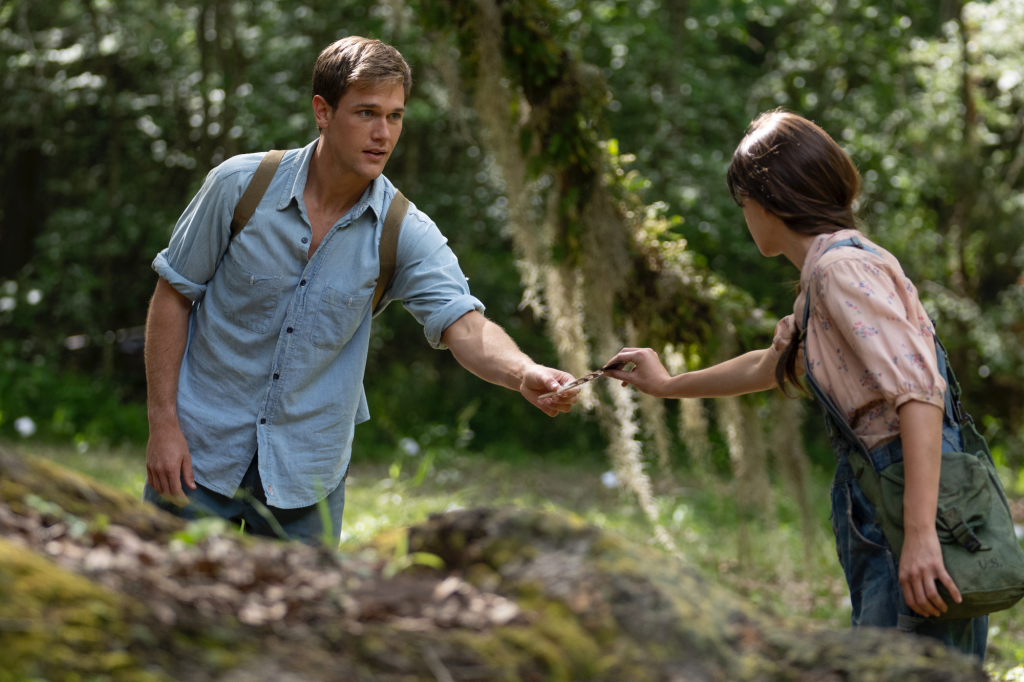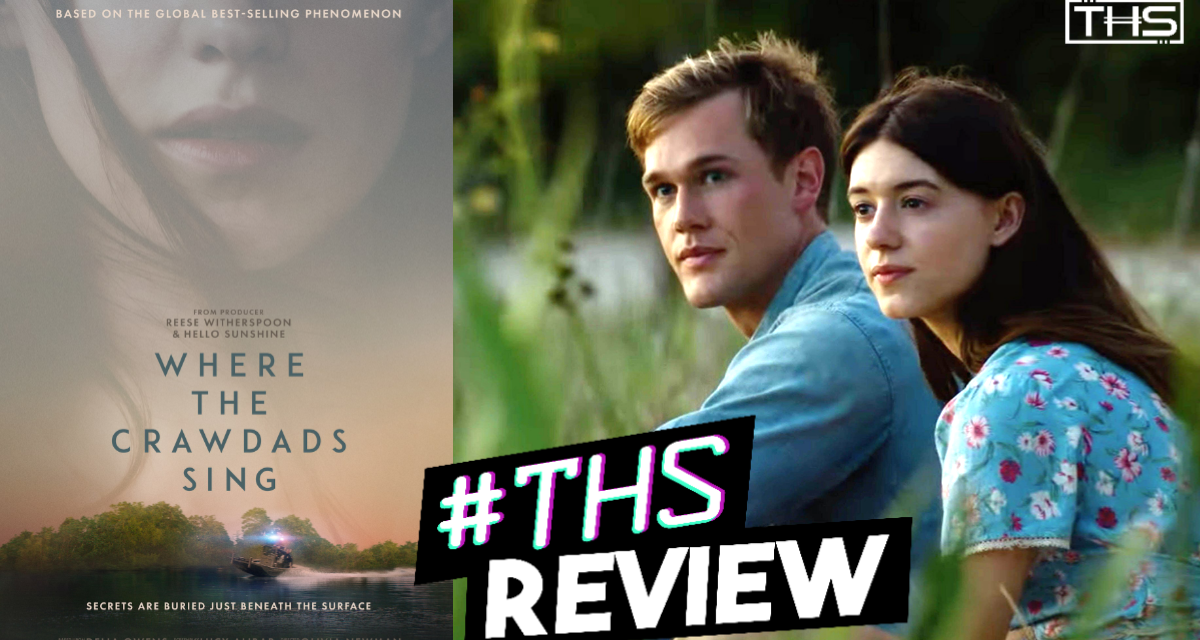Based on the bestselling novel by Delia Owens, Where the Crawdads Sing takes place in the marsh of North Carolina. The story follows the life of Kya Clark through her rough childhood and equally rough young adult years. Despite her hardships, she loves the nature she’s surrounded by and is highly self-reliant. However, things take a turn for the worse when Kya is accused of killing one of the town’s golden boys, Chase Andrews, with whom she was in a romantic relationship.
What I Liked

The marsh is a character itself in Olivia Newman’s film, and cinematographer Polly Morgan does a stunning job capturing it. From breathtaking sunsets to boat rides, visually, this film is gorgeous. It completely immerses us in the setting, allowing us to truly feel like we’re growing up with Kya.
There are also some powerful depictions of love. Kya’s life begins to change for the better when she and her childhood friend Tate start a relationship. In addition to all of the sweet montage moments, there’s something real at the core. Tate is supportive of Kya and pushes her to live up to her potential. He teaches her to read and encourages her to sell her art.
The even more powerful depiction, though, is arguably a platonic one. The found family relationship between Kya and local shopkeepers Mabel and Jumpin is beautiful. The two of them never stop looking out for and defending Kya despite having no obligation to do so. Not to mention the discrimination they themselves face.
The performances are solid despite the material the actors sometimes have to work with. (More on that later.) Daisy Edgar-Jones effectively toes the line between fierce and fragile, resourceful and naive. It’s Jojo Regina, though, who plays the younger version of Kya, that I found to be the standout. She grounds the entire film with her unflinching honesty and raw emotion.
What I Didn’t Like

Narratively, the story could be a bit of a mess. The way everything is woven together, switching back and forth between the present-day trial and long flashback sequences, feels rather clunky and jarring. The entire murder mystery aspect feels much weaker. I found myself wishing they would get through them so we could go back to the more compelling coming-of-age story instead.
The legal thriller aspect took the time we could have spent fleshing out the characters and their choices more vividly. For example, I still don’t exactly understand Tate’s decision to abandon Kya. Sure, he gives her (and us) a half-baked excuse, but it doesn’t feel particularly convincing.
The same goes for the town and their hatred for Kya. We are told time and time again that the community doesn’t like her, but this is mostly just alluded to. I never truly felt that Kya couldn’t seem to fit in no matter what — a key point they reference during the trial. Seeing more specific instances of Kya’s clash besides just the failed day at school and some irritating peers on the street — for instance, an interaction with Tate or Chase’s family — could help sell this more.
The lack of specificity is where this film suffers. Though the setting is as rich as they come, unfortunately, the same can’t be said for the script. The dialogue often feels cliche and cheesy. Thus, the most dramatic and emotional beats don’t hit as hard for that reason.
All of this combined can make it tedious to try and root for our protagonist. The movie pushes the idea that she’s independent and fiery, but she’s a rather passive character the majority of the time. Lots of things — tragedies, mostly — happen to her. It’s easy to sympathize, but watching her stuck in an endless cycle of being a victim can feel redundant and overly soapy.
It can also feel like Kya is the only one with real problems, and she’s innocent and perfect while everyone else is flawed. Take, for example, Mabel and Jumpin. They’re two of the most interesting characters, but sadly, they exist solely to help Kya’s story advance. Their struggles nor their dreams are ever mentioned — an odd choice considering they’re a Black couple living in the deep South in the 1950s. They’re surely dealing with their own issues, but they’re never once brought up.
Where the Crawdads Sing: The Bottom Line
Fans of the Where the Crawdads Sing book will likely find this adaption adequate. Though it encounters some major issues when being translated to the screen in terms of characterization and plot, there is still a lot to like. Those looking for a historic love story will be satisfied with the journey and the outcome, and audiences everywhere are sure to develop a deep appreciation for the marsh.





